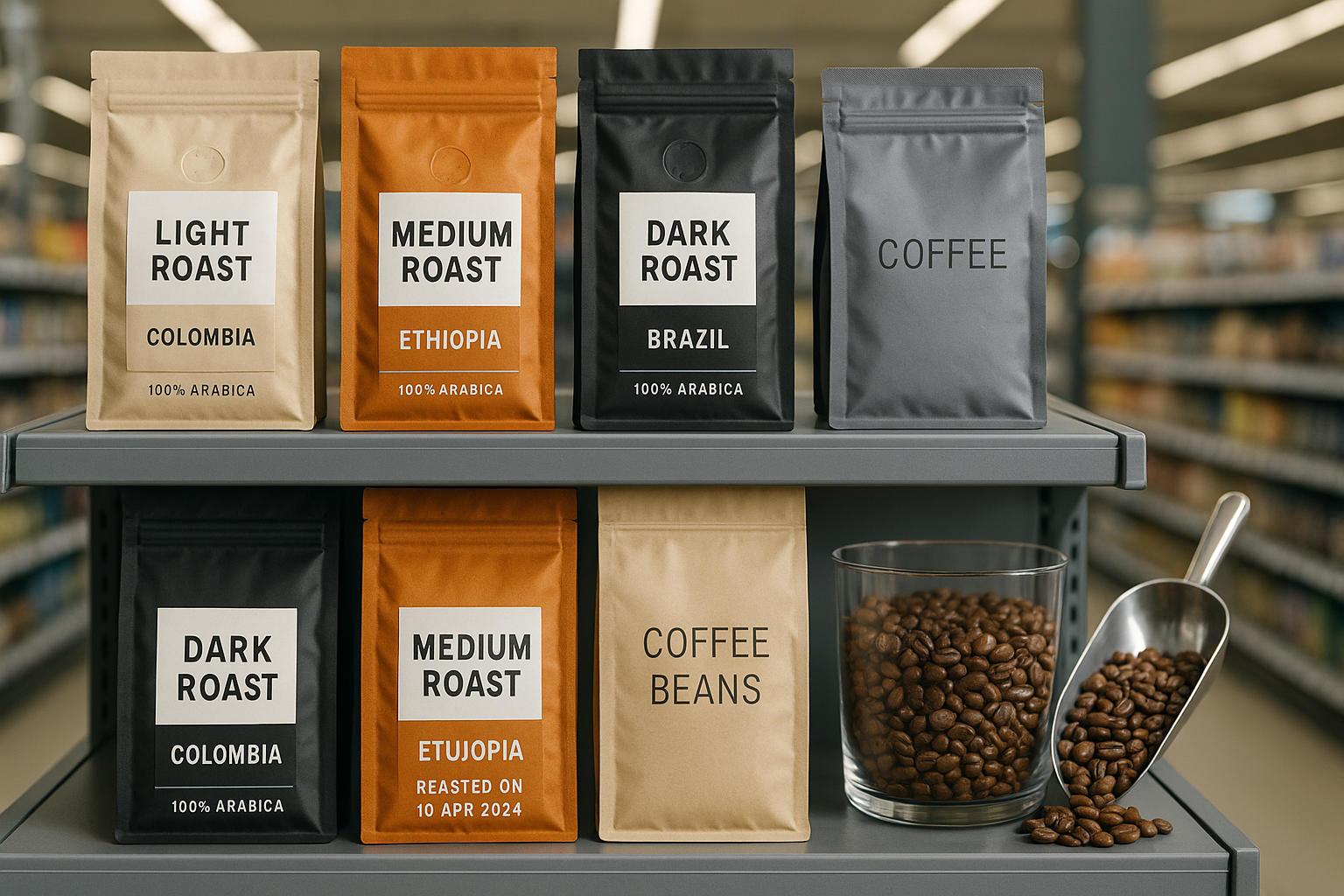Standing in front of the supermarket coffee aisle can feel overwhelming. So many brands, blends, roasts, and flashy packaging—it’s hard to know what’s actually good. But with the right knowledge, you can confidently pick a coffee that suits your taste and delivers quality.
Here are the golden tips you need to choose great coffee at the supermarket—and avoid stale, bitter disappointments.
1. Look for the Roast Date, Not the Expiry Date
Why It Matters
Coffee is best enjoyed fresh, ideally within 2–4 weeks of roasting. Many supermarket brands only show expiration dates, which can be a year or more after roasting.
What to Do
- Search for a “roasted on” date.
- If it’s older than a month, skip it.
- Avoid packages without any roast information.
2. Choose Whole Beans Over Ground Coffee
Why It Matters
Once ground, coffee loses its aroma and flavor quickly due to oxidation. Whole beans preserve freshness longer.
What to Do
- Always buy whole beans if possible.
- Use a grinder at home for maximum flavor.
- If you must buy ground, choose small quantities.
3. Know Your Roast Level
Coffee is usually sold in one of three roasts:
- Light roast: More acidity, fruity or floral.
- Medium roast: Balanced, sweet, and smooth.
- Dark roast: Bold, bitter, smoky or chocolaty.
What to Do
- Read the roast description on the package.
- Choose medium for a safe, balanced option.
- Pick light for a brighter taste or dark if you love bold flavor.
4. Read the Origin Information
High-quality coffee often comes from a single origin (one country or region), while blends mix beans from multiple places.
What to Do
- Prefer coffees with clear origin labels: Ethiopia, Colombia, Brazil, etc.
- Single-origin coffees tend to have distinctive flavor notes.
- Avoid vague labels like “100% Premium Coffee” with no origin.
5. Look for the Bean Type: Arabica vs. Robusta
- Arabica: Smoother, more complex flavor, lower caffeine.
- Robusta: Stronger, more bitter, higher caffeine.
What to Do
- Prefer 100% Arabica for better taste.
- Avoid products with unspecified blends unless you enjoy bold, bitter coffee.
6. Avoid Coffee with Artificial Flavors
Flavored coffees often mask lower-quality beans and can leave chemical aftertastes.
What to Do
- Stick to natural coffee with no added flavors.
- If you like flavored drinks, add natural syrups or spices at home.
7. Check Packaging Quality
Good packaging preserves freshness. Look for:
- One-way valves to let CO₂ escape while keeping air out.
- Sealed, opaque bags to block light.
- Tightly sealed tops (avoid ziplock-style clips on thin plastic).
8. Ignore Branding Hype—Read the Details
Don’t let buzzwords fool you:
- “Gourmet” and “Premium” are not regulated.
- “100% Coffee” doesn’t mean it’s fresh or high-quality.
What to Do
- Focus on the details: roast date, origin, roast level, bean type.
- Avoid overly colorful, vague packaging without specific info.
9. Smaller Local Brands Often Mean Fresher Beans
Local or smaller roasters often supply fresher coffee than big-name brands sitting on shelves for months.
What to Do
- Look for small-batch or local roasts in your supermarket.
- These often display fresh roast dates and clearer info.
10. Trust Your Taste and Experiment
Taste is personal. Some love a dark roast from Brazil; others prefer light Ethiopian beans.
What to Do
- Try a few different origins and roasts.
- Keep notes on what you like.
- Once you find a favorite, look for it again—or try a similar region or roast.
Bonus Tip: Supermarkets Aren’t Always the Best Place
For the best beans, try:
- Local coffee roasters
- Online specialty stores
- Farmers markets
These places often offer:
- Fresh roast dates
- Expert advice
- Single-origin and seasonal varieties
Final Sip: Choose Smart, Brew Better
You don’t need to be a coffee expert to make better supermarket choices. Just remember:
✅ Check the roast date
✅ Pick whole beans
✅ Know your roast level
✅ Read origin and type
✅ Avoid artificial flavors
✅ Examine the packaging
With these golden tips, your next bag of supermarket coffee might just surprise you—in the best way.
